ONLINE streaming sites like Netflix and Amazon UK have made it easier than ever to access thousands of films with the click of a few buttons.
And with the Covid-19 lockdown ongoing, and Cineworld Jersey temporarily closed (although hopefully due to reopen ASAP), there has never been a better time to indulge in watching films in the comfort of your own home.
As such, I’ve been running a series on the JEP’s weekly film pages in which, every Saturday, I pick my top 50 must-see films from a particular genre – not necessarily the greatest ever made (although many of them certainly qualify as such), but the ones that I personally most recommend watching.
To date, I have covered crime, comedy, sci-fi, war, romance, horror, action/adventure, film noir, drama, westerns, children’s films and even so-bad-they’re-good films, and you can read my Top 50 Westerns list below.
For reasons more to do with OCD than anything else, I never allow the same film to appear in more than one list, thus ET is absent from my top 50 children’s films list because it already appears in my top 50 sci-fi films list, and so on.
All films are listed in order of personal preference, and all feedback is welcome, regardless of whether you agree or disagree with my choices: togg@jerseyeveningpost.com

TOP 50 WESTERNS
YEE-HA! Saddle up, folks, because it’s time for – wow-oh-wow-oh-wow, wah-wah-wahhhh – my top 50 westerns.
For whatever reason, the western genre didn’t overly interest me in my younger years (my knowledge of Clint Eastwood films amounted to Dirty Harry, Play Misty for Me, In the Line of Fire and those ones with the orang-utan).
Today, however, I’m something of a western obsessive, and Clint Eastwood is easily one of my all-time favourite film stars (now aged 90, Eastwood is still going strong, as evidenced by his compelling turn in 2018’s The Mule, a terrific crime-drama which he also directed and co-produced – the man is, quite frankly, a machine).
Having said that, western connoisseurs may notice a few absences from my list, not least Kevin Costner’s Dances with Wolves (1990), which might well have won a stack of Oscars, but which I think is um heap self-indulgent and woefully misjudged vanity project (several historians have noted that the Lakota Indians were far from the docile environmentalists seen in Costner’s film and, in reality, would have swiftly carved his Lieutenant Dunbar a new one).
Rather infamously, Dances with Wolves beat Martin Scorsese’s Goodfellas to the Best Picture Oscar – an injustice that ought to have seen Joe Pesci’s Tommy DeVito visiting the Academy voters’ homes in retaliation.
Also absent from my list is Howard Hawks’ El Dorado (1966), not because it isn’t good (the film has a rare 100% critical approval rating on Rotten Tomatoes), but simply because I haven’t yet watched it. Sadly, I suspect that memories of early-1990s BBC soap opera Eldorado may have led to me subconsciously sticking Hawks’ namesake on the backburner.
1. The Good, the Bad and the Ugly (1966, Sergio Leone)
ONE of the most perfect trilogies in cinema wasn’t actually intended as a trilogy at all.
Believe it or not, Italian filmmaker Sergio Leone didn’t envisage his ‘Dollars Trilogy’ – as A Fistful of Dollars, For a Few Dollars More and The Good, the Bad and the Ugly would come to be known – as a trilogy, something which is evident by Lee Van Cleef’s character in the third and final film of the series (Van Cleef’s cold-hearted ‘Angel Eyes’ – the ‘bad’ of the title – is quite unlike his kindly Colonel Douglas Mortimer in For a Few Dollars More). It is only the appearance of Clint Eastwood’s mysterious ‘Man with No Name’ in all three films that has seen critics and fans retrospectively labelling them a trilogy.
And in contrast to most trilogies, it is the third film that is the strongest of the series. While A Fistful of Dollars and, especially, For a Few Dollars More are both superb westerns in their own right (hence their appearance elsewhere in my top ten), The Good, the Bad and the Ugly is simply as good as cinema gets, and is thus essential viewing even for those whose interest in cowboys is akin to Eli Wallach’s Tuco’s interest in personal hygiene.
Speaking of Wallach, the late American actor steals the show here. While Eastwood and Van Cleef are both effortlessly mesmeric screen presences, Wallach’s ‘ugly’ Tuco is by far the most fully rounded of the three central characters; despite his immoral and selfish actions, he makes for a curiously sympathetic villain, and one that I can’t help but root for whenever I watch the film.
Of course, no write-up on The Good, the Bad and the Ugly would be complete without mentioning the late, great Ennio Morricone’s unforgettable soundtrack – a score so iconic, in fact, that it has since become as synonymous with the genre as Eastwood’s squint and John Wayne’s Stetson.
Film fact: Sergio Leone couldn’t speak English and, as such, the Italian director relied on an interpreter to relay direction to Eastwood and Van Cleef. Happily, he and Wallach were both fluent in French and so were able to communicate with one another directly.
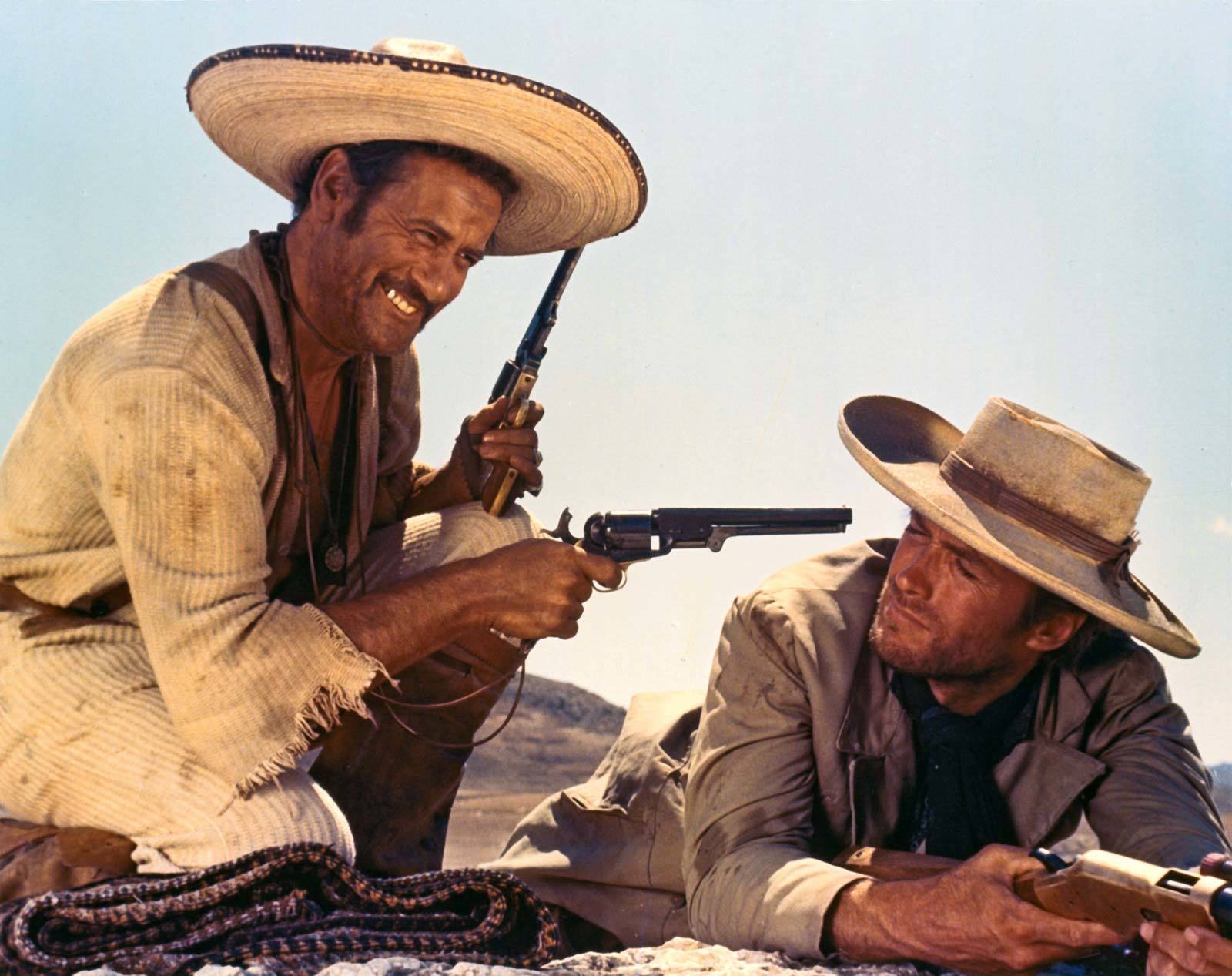
2. Unforgiven (1992, Clint Eastwood)
3. For a Few Dollars More (1965, Sergio Leone)
4. The Wild Bunch (1969, Sam Peckinpah)
5. Once Upon a Time in the West (1968, Sergio Leone)
6. Django Unchained (2012, Quentin Tarantino)
7. Man of the West (1958, Anthony Mann)
8. A Fistful of Dollars (1964, Sergio Leone)
9. Pat Garrett and Billy the Kid (1973, Sam Peckinpah)
10. Bone Tomahawk (2015, S Craig Zahler)
S CRAIG Zahler’s gripping horror-tinged western is a film of two distinct halves – which is fitting given that one of the film’s less fortunate characters ends up similarly split in two.
Set in the late 19th century, Bone Tomahawk stars the ever-excellent Kurt Russell as Franklin Hunt, the lusciously moustachioed sheriff of the small rural town of Bright Hope.
After the wife of a local foreman is kidnapped by a mysterious and deadly tribe of cannibalistic Native Americans, Hunt and a trio of brave/foolhardy companions – Brooder (Matthew Fox), Chicory (Richard Jenkins) and the aforementioned foreman, Arthur (Patrick Wilson) – set out to track her down, with eye-wateringly gruesome results.
As anyone familiar with Zahler’s impressive filmography will know, the American writer-director is not one for pulling his punches when it comes to… well, punches. Or kicks. Or stabbings. Or, indeed, scalpings and live bisections.
Yet even if you’re averse to graphic screen violence, Bone Tomahawk is essential viewing for western fans, with an impressive cast giving note-perfect performances (Fox is particularly good as the cool-headed Brooder) and Zahler’s intelligent script and precise direction generating an insidiously effective sense of impending doom.
Prior to making his directing debut with Bone Tomahawk (aged 43), Zahler was a prolific screenwriter and novelist, with four published books and 25 screenplays to his name (although at the time of Bone Tomahawk’s release, only one of these – 2011’s disturbing Asylum Blackout [aka The Incident] – had made it to the screen).
Thankfully, the critical and relative commercial success of his debut resulted in Zahler developing a career as an accomplished filmmaker, with brutal prison thriller Brawl in Cell Block 99 (2017) and gritty action-thriller Dragged Across Concrete (2018) maintaining the quality of Bone Tomahawk.
At the time of writing, Zahler is preparing to return to the Old West for an ‘ultra-violent western’ co-directed by himself and South Korean filmmaker Park Chan-wook (Oldboy).
Film fact: If anything, Zahler’s follow-up film, Brawl in Cell Block 99, is even more brutal than Bone Tomahawk, which is a little like discovering that the vindaloo you’re midway through consuming contains even more chillies than the one that recently left you hospitalised for a fortnight.
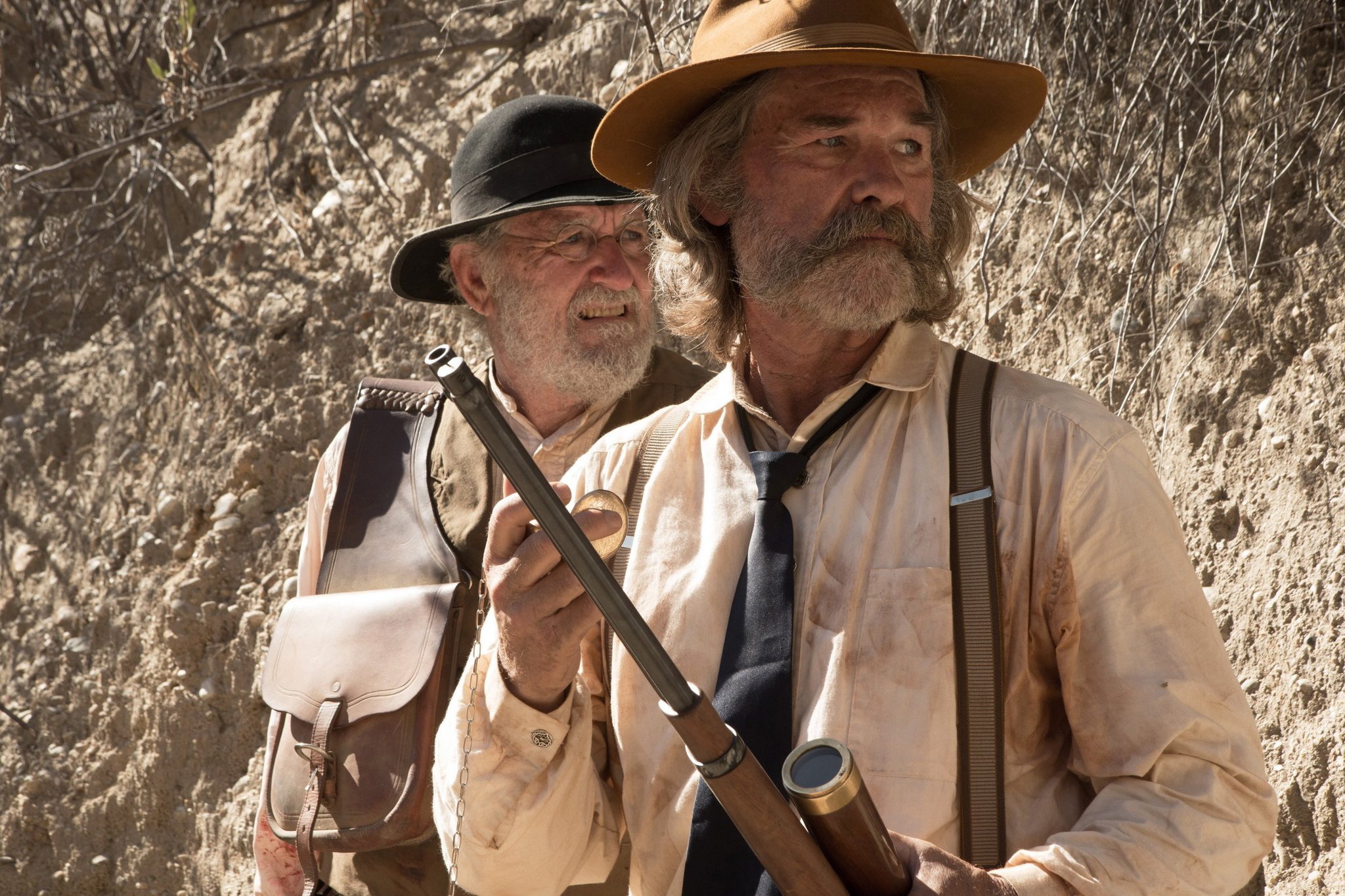
11. The Magnificent Seven (1960, John Sturges)
12. My Darling Clementine (1946, John Ford)
13. True Grit (1969, Henry Hathaway)
14. Pale Rider (1985, Clint Eastwood)
15. The Shootist (1976, Don Siegel)
16. Red River (1948, Howard Hawks)
17. The Searchers (1956, John Ford)
18. The Outlaw Josey Wales (1976, Clint Eastwood)
19. Butch Cassidy and the Sundance Kid (1969, George Roy Hill)
20. How the West Was Won (1962, John Ford, Henry Hathaway and George Marshall)
21. Tombstone (1993, George P Cosmatos)
22. High Plains Drifter (1973, Clint Eastwood)
23. Django (1966, Sergio Corbucci)
24. Rio Bravo (1959, John Ford)
25. The Ballad of Buster Scruggs (2018, Joel and Ethan Coen)
26. Shane (1953, George Stevens)
27. High Noon (1952, Fred Zinnemann)
28. The Big Trail (1930, Raoul Walsh)
29. The Man Who Shot Liberty Valance (1962, John Ford)
IN these stridently politically correct (ie boring) times, John Wayne has fallen out of favour even more than most golden-age movie stars whose on-screen aliases and off-screen opinions have been found wanting.
That, however, is a loss only to those who insist on following the current zeitgeist. For those of us who couldn’t care less what ‘the Duke’ did or said when away from the camera, the man remains an iconic and endlessly watchable big-screen titan: an actor as integral to the history of westerns as Gary Cooper and Clint Eastwood. And The Man Who Shot Liberty Valance offers one of his very best performances.
Directed by John Ford, the film stars Wayne as Tom Doniphon, an ageing rancher who befriends James Stewart’s principled but naive Ranse Stoddard, an aspiring lawyer who arrives in the frontier town of Shinbone determined to bring a ruthless outlaw, Liberty Valance (Lee Marvin), to justice and introduce law and order to the town’s uneducated citizens.
Filmed in black-and-white at a time when colour was becoming increasingly prevalent, The Man Who Shot Liberty Valance is a notable departure from Ford’s earlier Westerns, with little of the romanticised depiction of frontier life as seen in Stagecoach (1939) and She Wore a Yellow Ribbon (1949).
Although at first Doniphon may seem a stereotypically stoic Wayne figure, there is a world-weary resignation to the character, who sounds deflated even when offering Stoddard manly advice (‘I know those law books mean a lot to you, but out here a man settles his own problems’). Even Doniphon’s courting of Vera Miles’ ‘mighty pretty’ waitress seems driven more by loneliness than lust.
By all accounts, Ford treated Wayne terribly throughout the shoot, openly mocking the actor in front of his fellow cast and crew, and making cruel references to Wayne’s lack of combat during the Second World War.
Unpleasant though it may have been, Ford’s bullying certainly seemed to add depth to Wayne’s performance, with the Duke’s melancholic demeanour appearing all too believable. Proof, as if it were needed, that the erstwhile Marion Morrison was a talented and sensitive actor beneath the gruff exterior.
Film fact: Cyril J Mockridge and Alfred Newman’s score has proven influential. Listen closely to the opening credits music and you’ll notice more than a passing resemblance to composer John Williams’ famous Star Wars theme.
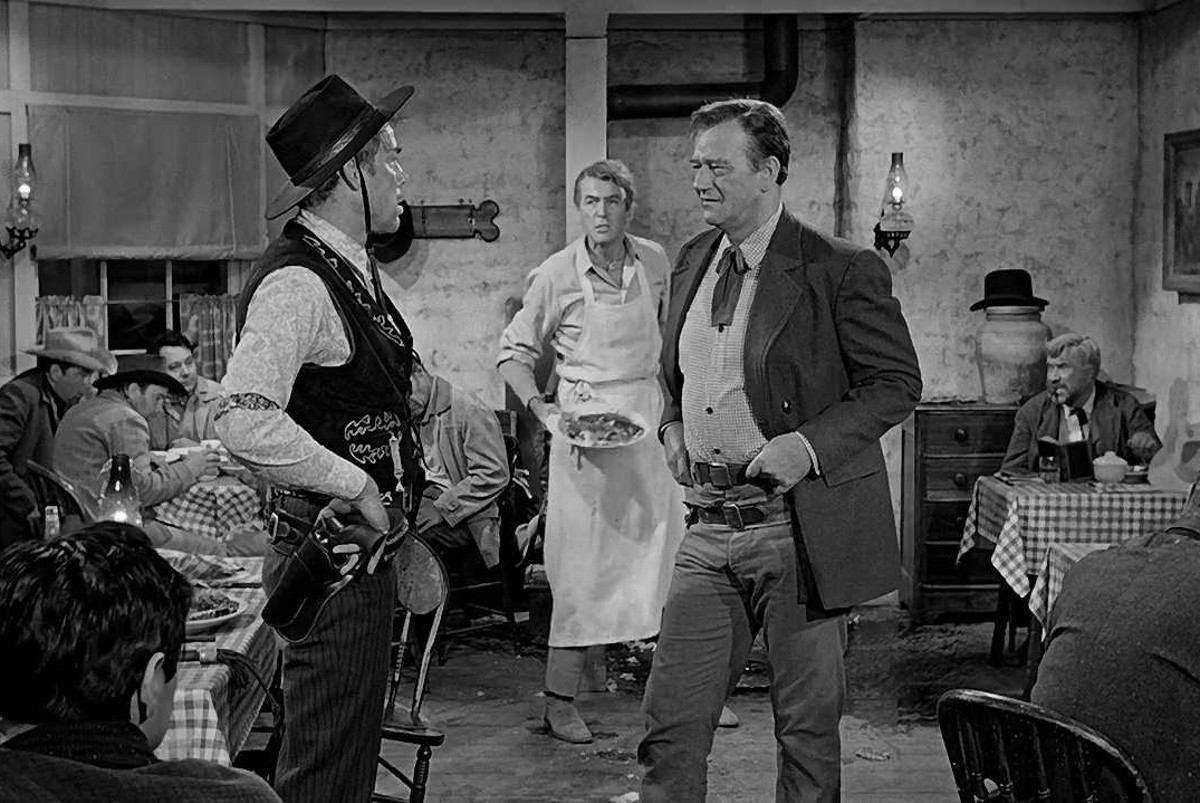
30. The Hateful Eight (2015, Quentin Tarantino)
THE second western to bear the legend ‘written and directed by Quentin Tarantino’ (the first being the audacious Django Unchained), The Hateful Eight follows eight strangers who find refuge in a haberdashery in the snow-swept wilderness of 19th century southern America.
This being Tarantino, however, not everyone is who or what they seem and before long mistrust and paranoia have escalated into a murderous bloodbath.
The Hateful Eight features the sort of outstanding cast audiences have come to expect from Tarantino’s films, with the likes of Kurt Russell, Bruce Dern, Samuel L Jackson and Jennifer Jason Leigh all on top form, while Channing Tatum and stuntwoman extraordinaire Zoë Bell appear in memorable cameo roles.
Upon release, the film met with a mostly ecstatic response from critics and Tarantino fans, although some complained about the film’s length (which is a severed ear away from three hours); in truth, this hefty running time merely recreates the leisurely pace of the classic Westerns to which Tarantino was paying homage.
One aspect of the film that did receive universal acclaim was its score, with composer Ennio Morricone finally bagging a long-overdue Oscar for a soundtrack that combines compositions both old (several unused pieces from Morricone’s score for John Carpenter’s The Thing) and new.
Unsurprisingly given its director, The Hateful Eight is vehemently violent, with splatter-filled gore sequences that are more akin to a pre-CGI horror movie than any Clint Eastwood picture. This West is as wild as they come.
Film fact: The Hateful Eight was shot with authentic 70mm film stock in order to replicate the look and feel of old westerns. Unfortunately, this resulted in some cinemas being unable to screen the film.
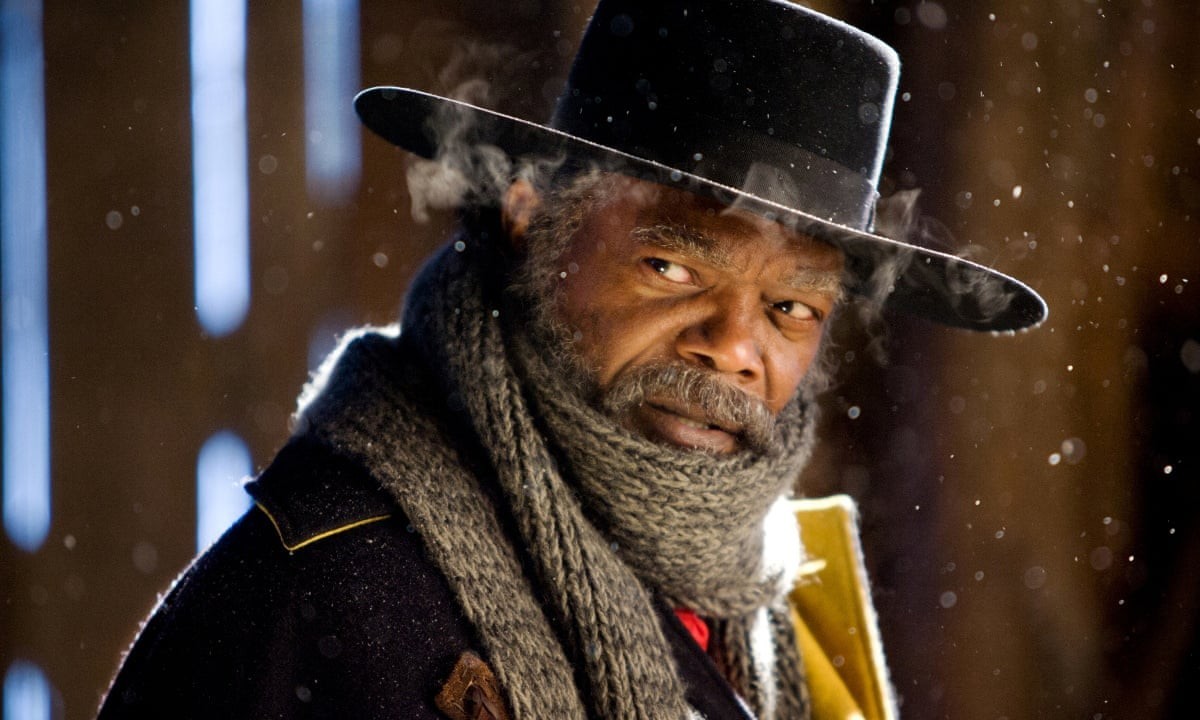
31. Ride the High Country (1962, Sam Peckinpah)
32. She Wore a Yellow Ribbon (1949, John Ford)
33. Hang ’Em High (1968, Ted Post)
34. El Topo (1970, Alejandro Jodorowsky)
35. The Cowboys (1972, Mark Rydell)
36. The Oklahoma Kid (1939, Lloyd Bacon)
37. Near Dark (1987, Kathryn Bigelow)
38. McCabe and Mrs Miller (1971, Robert Altman)
39. Stagecoach (1939, John Ford)
40. Destry Rides Again (1939, George Marshall)
41. Heaven’s Gate (1980, Michael Cimino)
LOOK, I like it, okay…
Film fact: One of the most notorious (and expensive) flops in cinema history, Michael Cimino’s opinion-dividing western took so long to shoot that actor John Hurt – who plays one of the main characters in the film – was able to walk off set, return to the UK, play the lead role in David Lynch’s The Elephant Man (1980) and then return to the US to continue shooting.
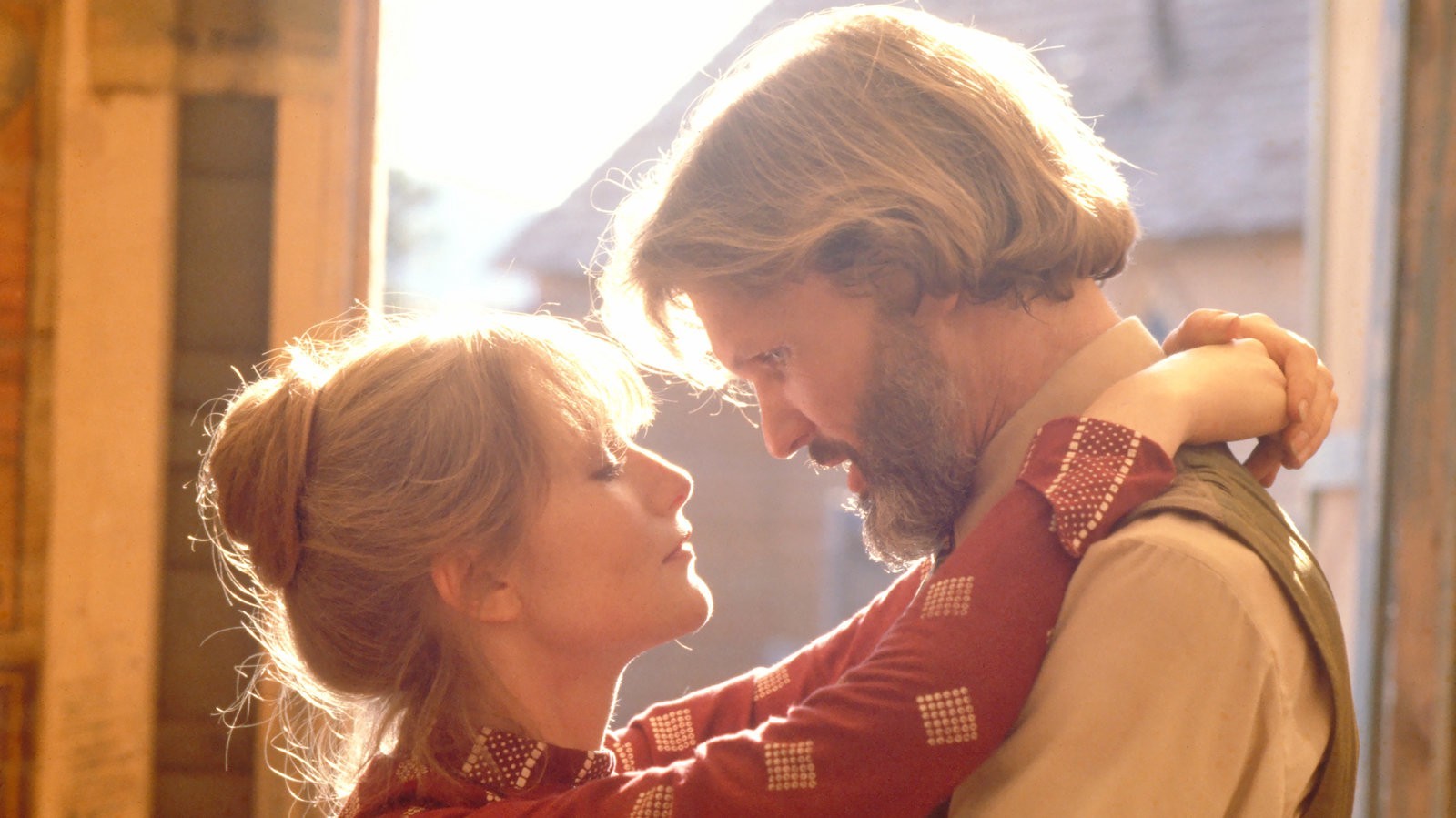
42. Three Amigos (1986, John Landis)
43. 3:10 to Yuma (2007, James Mangold)
44. The Missouri Breaks (1976, Arthur Penn)
45. Lone Star (1996, John Sayles)
46. Silverado (1985, Lawrence Kasdan)
47. One-Eyed Jacks (1961, Marlon Brando)
48. Little Big Man (1970, Arthur Penn)
49. The Frisco Kid (1979, Robert Aldrich)
50. Brimstone (2016, Martin Koolhoven)
‘BRIMSTONE? Never heard of it.’
Such is the reaction I receive roughly 99.9% of the time when I bring up Martin Koolhoven’s epic two-and-half-hour western-thriller in conversation. This is a shame because, while not perfect, the film features tremendous performances from both Guy Pearce and Dakota Fanning and deserves an audience far larger than it has received thus far.
Set in the old west in the late 19th century, Brimstone centres on Liz (Fanning), a married mother-of-two who is mute (for gruesome reasons that become all too apparent) and who acts as a midwife for the local villagers.
Things take a turn for the nasty, however, when a botched pregnancy attracts the righteous ire of the newly arrived Reverend (Pearce), a hellfire preacher who seems to harbour a personal vendetta against Liz.
The subsequent time-hopping narrative takes place across four separate chapters, each of which is given a weighty title such as Genesis or Retribution (a barrel of laughs Brimstone is not), and each of which reveals more of the twisted backstory between Liz and the unruly Rev.
As is perhaps apparent, the resultant film is almost unfailingly grim from start to finish, with queasy moments of stomach-churning violence and brutality, and a fatalistic tone that some may find oppressive (Games of Thrones heartthrob Kit Harrington momentarily threatens to lighten the mood, only to unceremoniously depart in underwhelming fashion).
Yet the film makes for compulsive viewing, with outstanding set design courtesy of award-winning production designer Floris Vos and convincingly of-the-period performances, with Pearce on fire (literally) as the Bible-thumping Reverend.
The Australian actor is among the most likeable actors working today, but be warned: there is none of the erstwhile Neighbours star’s natural charisma on show here. Instead, Pierce imbues the irredeemably unpleasant character with an unshakable zealotry that sees him justifying even the most extreme behaviour (incest, paedophilia, murder) with loopy religious quotations.
Rather bafflingly, Brimstone received a subdued response from film critics upon release, with some being outright hostile (it warranted a measly one star out of five on Roger Ebert’s website). The message at the heart of the film is that life can be cruel and unfair – and it would seem the same can be said for film critics.
Film fact: Kit Harrington isn’t the only Game of Thrones star to appear in Brimstone. The Red Witch herself, Carice van Houten, makes a memorable appearance as Anna, an unfortunate villager who is forced by the Reverend to wear a Hannibal Lector-style face mask. Thankfully, she and Guy Pearce got on rather better off-screen, and the pair have been together ever since, with their first child born the year of the film’s release.

* If you enjoyed this list, be sure to read my other top 50 film lists on the Features page of the Jersey Evening Post website






